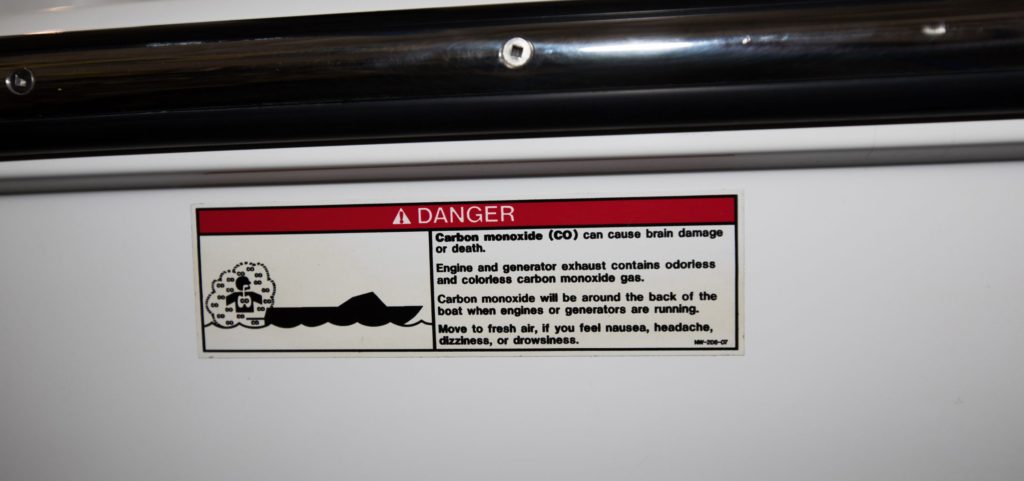If you’re a hardy boater who ventures out despite dropping temperatures and bracing winds, the payoff is near-empty waterways. But the drawback is growing chilly even on a sunny afternoon.
When a skipper or a passenger starts to shiver, the inclination is to put on the boat covers to block out the cold. However, that move could prove deadly, as carbon monoxide (CO) gas gets trapped and poisons those aboard.
CO is an odorless, colorless, and tasteless gas. Because of that, it’s termed a “silent killer,” as it may cause death after prolonged exposure to low concentrations or following brief exposure to high concentrations. According to the Centers for Disease Control and Prevention, about 400 people die in this country every year from unintentional carbon monoxide poisoning.
 The burning of carbon-based fuels (including gasoline, propane, charcoal, and oil) produce CO. While CO is a peril all year, the threat increases in the colder seasons, as cold engines produce more CO than warm, and covers are more likely to stay on when temperatures nosedive.
The burning of carbon-based fuels (including gasoline, propane, charcoal, and oil) produce CO. While CO is a peril all year, the threat increases in the colder seasons, as cold engines produce more CO than warm, and covers are more likely to stay on when temperatures nosedive.
Multiple sources on a boat emit CO; the leading cause of deaths comes from exhaust leaks. The gas migrates throughout the boat and collects in enclosed areas including the cabin and cockpit, especially when the windows and doors are closed. Blockage of exhaust outlets (from damage, wear, or wind or other elements) can also cause CO to accumulate in enclosed areas where people congregate when it’s chilly.
Poisoning doesn’t occur only when moored or anchored, nor only when it’s cold outside. The rear of the boat is an unsafe area while underway, as exhaust pipes and vents can trap CO coming from the engine or generator, and fumes may also flood into the cabin, cockpit, and bridge when operating the boat at a high bow angle.
In some cases, those suffering from CO poisoning may experience dizziness, headache, irritated eyes, nausea, lethargy, or weakness. You can be affected by CO but not understand what’s happening while there’s still time to react. Symptoms might mistakenly be attributed to other factors, including seasickness, but time is not on your side if there’s any threat that the cause could be a CO.
Always assume that it’s a case of CO poisoning and spring into action. Do whatever it takes to stop the concentration of fumes. Flood the boat with fresh air by opening the windows and hatches. Pull back the cover. Run exhaust blowers. Turn the boat so that the winds take the exhaust away or shut off the engines. Hail the U.S. Coast Guard or call 911 immediately.
Be proactive to prevent a possible tragedy on your vessel. Pinpoint the zones on your boat where CO may accumulate and tell shivering passengers and crew to toss on an extra sweatshirt instead of retreating into those areas. All boats should have multiple CO detectors as recommended by the manufacturer or after-market installation guide. Boats with a generator should also have a 110-volt detector. Check the CO detectors before each trip to be sure they are functioning properly, and if the detector goes off while you’re underway, believe it!
![]()
Poisoning prevention checklist
http://uscgboating.org/recreational-boaters/carbon-monoxide-checklist.php




